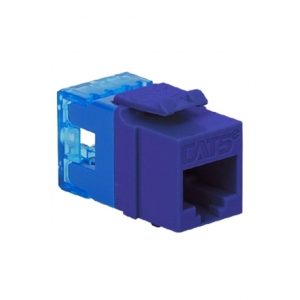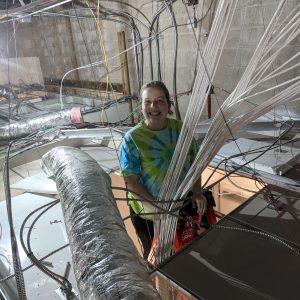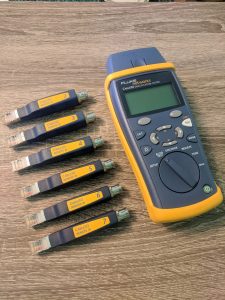TCC Telecom offers a wide variety of services to our clients, but one of the most important ones we offer is structured voice and data cabling! The cable in your office space, restaurant, doctor’s office, or wherever you work, is the backbone of your communications system. Without it you would not be able to easily and effectively get in touch with the outside world.
We have cabled in many different settings and one of our favorites is new construction. New construction cabling requires a bit more work and planning than adding a cable in an existing space, but is so rewarding to be able to see the transformation of the space and your role in it.
Below are the basic steps we follow for any new construction cabling job.
Get the Plans
The plans are the most important part! Without them we can’t plan anything: placement, number of cable drops, or equipment needed. It’s important to get these from the client as soon as possible so that we have ample time to start planning.

Mapping it All Out
Official plans usually come with the low voltage marked for us. After we get the plans we go over them to see how many drops are being requested. We also work with the customer to make sure this number and the location in correct. During this stage we also are able to decide the equipment necessary to complete the job. We have to think about things such as how much cable (and whether it is Cat5 versus Cat6 and if plenum is needed), how many jacks and face plates, how large of a patch panel, and do we need a floor rack or a wall mount rack.
The type of cable a customer uses, Cat5 or Cat6, is up to the customer. We typically recommend that a customer always get Cat6 for new construction if the budget allows. Cat5e is still great cable for right now but moving forward Cat6 will be best.
Whether or not a customer needs plenum cable or not is decided by HVAC. Plenum cable has a special insulation and is low-smoke and low-flame for air handling spaces, such as if the air is returned to the AC unit in a ceiling. If plenum cable is required by code, so are special plenum rated cable ties. Plenum materials are much more expensive than typical PVC (or riser) cable.
A patch panel is where all the cables are terminated to, typically in the telecom or electrical closet. Patch cords then connect from the patch panel to the various phone and data equipment to get the office up and running.
Patch panels can be either wall-mounted or floor-mounted. We usually mount all our patch panels in a wall-mounted rack. For many small-to-medium sized businesses, a small wall-mount rack is all that is necessary. Larger businesses, or those that have a lot of data equipment may need a floor mount rack (or more than one!) to hold all their equipment.
Contact the General Contractor
After we get the plans and we have been given the information for the General Contractor (GC) it’s time to get in touch with them to get their construction schedule. This schedule lays out the projected start and end dates for the project, the time frame each vendor has to complete their work, as well as anticipated inspection dates. On new construction there are a lot of moving parts that all depend on each other, but this schedule helps us plan our work schedule.
The GC also lets us know if plenum cable is required, what color the walls will be so we can choose the correct face plates, and they will provide us with the building permit that we need in order to get our low voltage permit.
Order Cable and Other Equipment

Earlier when we were going over the plans we made a list of all equipment that will be needed to complete the job. Now we get to order it! We use Honeywell cable, and exclusively use ICC jacks, face plates, and patch panels.
Obtaining a Permit
Obtaining a permit is a vital step in all new construction work. As soon as we find out about the job, or possible job, we spend some time researching the codes in the county where the job will be performed so there are no surprises at the last minute. To get your low voltage permit you’ll need to have the information from the building permit, as well as how many drops you will be running. Not having your permit come inspection time can hold the job up!
Pull the Cable

Meg pulling cable in a ceiling
Now the fun part begins – we get to start pulling all the cables! The best time to get in and pull cables, as a low-voltage vendor, is before the drywall goes up. This makes pulling cables easiest for us, as well as lessens the likelihood we are in another vendor’s way.
You have to be careful about all the rules with new construction. Any low voltage cables that are run in the ceiling need to be self-supported or can only be tied on to certain things in the ceiling. Not knowing these rules will result in failing an inspection and having to come back and fix your work, and – worst case scenario – hold up the client from getting into their space.
Getting Inspected
There are two inspections that matter to us as a low voltage cabling company. They are the ceiling close in and the final electrical permit. An inspector comes in and looks at all the cables you’ve run to make sure you’ve met all of the county codes.
Finishing Touches

Our cable qualification tool
The last thing we do on a new construction site is to come back and put all the face plates on. This may seem like a simple task, and it is, but we still take it very seriously. We are meticulous in our work, and we take the time to make sure the screws in your face plate even match in a vertical position.
After all cables are jacked and face-plated and connected to the patch panel we come back and qualify all your cables. We have a special piece of equipment that will let us know that every cable works from jack to patch panel. It lets you know the length of each cable, the speed it is qualified for, and if there is a problem it lets you know where it is on the cable. You even receive a PDF copy of our report which we pass on to the customer.
As with any job, we are not done until we clean up our mess. We throw away all trash, and vacuum and sweep if necessary.
Contact Us Today
If you have a new construction job coming up, please think about us and reach out to get a quote on all your cable needs. You can call us at 443-201-8074, email us at info@tcctelecom.com, or fill out the form here.
